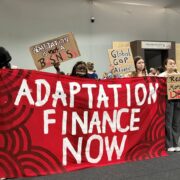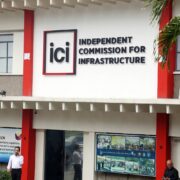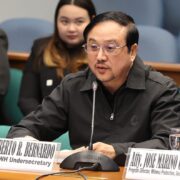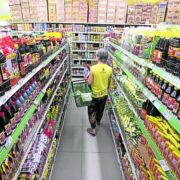Pain and suffering over San Juanico

Without so much as a warning, the Department of Public Works and Highways imposed on May 14 a 3-ton load limit on vehicles crossing the vital San Juanico Bridge that transports people, cargo and equipment between the islands of Leyte and Samar.
This single action immediately plunged the entire Eastern Visayas region into chaos, with economic losses stemming from the severe restriction in the flow of goods and people estimated to run up to as much as P600 million a month, according to the National Disaster Risk Reduction and Management Council.
The governors of Samar and Eastern Samar as well as the mayor of Tacloban City immediately declared a state of calamity to accelerate the release of funds to cope with the abrupt reduction in the load limit on all vehicles crossing the 52-year-old bridge, from as high as 13.5 tons to just 3 tons.
Human and financial resources have been immediately deployed, for example, to start building or fortifying ports in the provinces that can accommodate trucks and buses that had been barred from crossing the 2.16-kilometer bridge, and have to be transported through barges of which there are not enough.
Serious structural defects
The local government units across Eastern Visayas indeed continue to scramble for alternatives as the flow of fuel, food, hospital equipment and construction materials from the region’s economic center of Tacloban City to the three Samar provinces has been drastically reduced, driving up consumer prices across all categories due to constricted supply.
Even Mindanao is feeling the pain of the sudden restricted use of the San Juanico Bridge, which is a vital part of the Pan-Philippine Highway or the Maharlika Highway, an extensive network of roads, bridges, and sea routes that connect the islands of Luzon, Samar, Leyte, and Mindanao.
The DPWH has justified its radical action by citing grave safety concerns arising from the “precarious” state of the bridge with serious structural defects found on three spans. As these were deemed unsafe, immediate action had to be done regardless of the consequences.
The DPWH’s safety concerns are certainly justified and readily shared by the public who accept that the load restriction had to be done to prevent an even more severe consequence, including the collapse of some sections of the bridge.
Vital bridge
However, the DPWH cannot conveniently hide behind commuter safety and wash its hands of responsibility for the suffering of the entire Eastern Visayas. After all, the agency had known for years that San Juanico’s condition has been steadily deteriorating and that extensive retrofitting and rehabilitation work needed to be done. The DPWH Eastern Visayas Regional office already determined the “alarming state” of the San Juanico Bridge in 2022 after an ocular inspection and testing by its own people.
The three years since the evaluation was made should have been used to give the provinces enough time to prepare; alternative ports could have been readied; more roll-on, roll-off vehicles deployed and logistical systems modified to cope with the slash in the vehicle load limit as necessary rehabilitation of the vital bridge is implemented.
Tacloban City Mayor Alfred Romualdez also pointed out that when repairs were done on the bridge some 20 years ago, preparations were done six months ahead, precisely to prepare those who will be directly affected by the painful—albeit necessary—disruption.
Egregious mistakes
But this time around, there was no warning, no advance notice. The DPWH is in desperate mode to rush the completion of the most urgent repairs so that the load limit will be increased in five months. This, while it constructs a second bridge alongside the current one, a flagship project of President Marcos’s father.
But alas, while the P2.1-billion retrofitting project is under way, and the promised second bridge starts construction in 2027, those in Eastern Visayas have no choice but to continue bearing the dire consequences of the government’s flawed planning.
Eastern Samar Gov. Ben Evardone has lamented the “significant” price increases in various goods, from consumer products, agricultural goods, construction materials and petroleum products, not to mention the great inconvenience to the people who regularly travel to Tacloban City.
Romualdez, meanwhile, had warned of dampened economic activity in the city given its heavy dependence on the flow of goods and people. Indeed, utter lack of foresight and the consequent drastic remedial actions have real adverse effects that are unfortunately felt most keenly by the most vulnerable Filipinos.
The havoc caused by the San Juanico repair and restricted movement should thus warn the Marcos administration against committing similar egregious mistakes, and let the resulting pain and suffering guide it as it undertakes the repair and rehabilitation of other key infrastructure, including Edsa, the country’s main artery.

















The final hurdle for digital inclusion